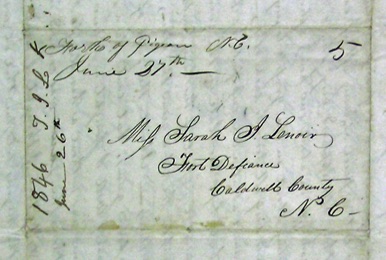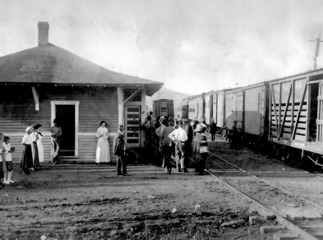Early Settlers
- Bethel’s earliest settlers came to the area 10,000 years ago in 8,000 B.C., according to the Garden Creek historical marker.
- Four separate archaeological digs have involved investigation of the Garden Creek Native American settlement: 1880, 1915, 1965, and 2011.
- The Garden Creek site is thought to encompass three Indian mounds and two villages on twelve acres.
- Three Cherokee ancestral inhabitants of Bethel were the Woodland Pigeon Culture (hunter/gatherer) - 300 B.C. – 200 A.D.), the Woodland Conestee Culture (hunter/gatherer/cultivator of seeds - 200-700 to 800 A.D.), and the Pisgah Culture (maize-based agriculture with trade networks - 800 – 1500 A.D.). A state historic marker commemorates the location of the Native American settlement.
- Agriculture has been a lifestyle component in Bethel for approximately 2,000 years, dating to these first inhabitants.
- Bethel’s first white settlers arrived in 1775, making Bethel home to the first white settlement in Haywood County.
Bethel Community Historical Data

Envelope from an 1846 letter from Thomas Isaac Lenoir to his sister Sarah at Fort Defiance, NC. with Forks of Pigeon on the label.

Woodrow Train Station
Bethel Names and Their Origins
- Bethel’s original Native American name, “Sonoma,” means “valley of the moon” or “ earth village.” Sonoma Road and Sonoma Masonic Lodge still bear the legacy of the original Native American name for the community.
- As the early settlement around the confluence of the East and West Forks of the Pigeon River developed, folks began calling the area “Forks of Pigeon.” Colonel Joseph Cathey, who built a mill and general store at the “Forks” before the Civil War, was the postmaster of Forks of Pigeon for many years.
- Both the "Sonoma" and "Forks of Pigeon" names were supplanted by the “Bethel” name by the later-1800s. Bethel’s name, meaning “house of God,” was derived during the prominence of religious camp meetings that occurred from the early 1800s through the mid to later 1800s.
- Another alternate name for the community, “Pigeon Valley,” like “Forks of Pigeon,” relies on the prominent association the community has had with the passenger pigeon. Billions of now extinct passenger pigeons once traveled through the community on their annual migration route, leaving their legacy with several local names: Pigeon Community, Pigeon Gap, Pigeon River, Pigeon Street, and Pigeon Valley.
- Another name for Bethel that appears on maps is "Woodrow." A rail line by T & NC Railroad ran through the area with a stop in Bethel Community. Woodrow Train Station and Post Office existed from 1914-1927. Named for President Woodrow Wilson, the Woodrow identity was listed on maps so that outsiders would assume that the entire community existed by that name. Natives of the area, however, did not typically use the name except for reference to the depot and post office.
Historical Events, People, and Sites in Bethel
- The Rutherford Trace march proceeded through Bethel and beyond in 1776. General Griffith Rutherford and his more than two thousand troops conducted a scorched earth progression against thirty-six Cherokee villages in order to eradicate Cherokee resistance to white settlement in the area. Many early settlers to the area came here during the Rutherford Trace and later returned to settle. A state historic marker on Highway #276 across Waynesville Mountain commemorates the historic trek.
- North Carolina’s oldest metal truss bridge and the state’s only ornamental truss bridge, Truss Bridge #79, has resided in Bethel since 1891.
- Reputed to be North Carolina’s most prolific inventor, Calvin Filmore Christopher, resided in Bethel until his death in 1940. Oral and documented history indicate that he is responsible for over 100 inventions, including the computing scale and gasoline tank measuring device.